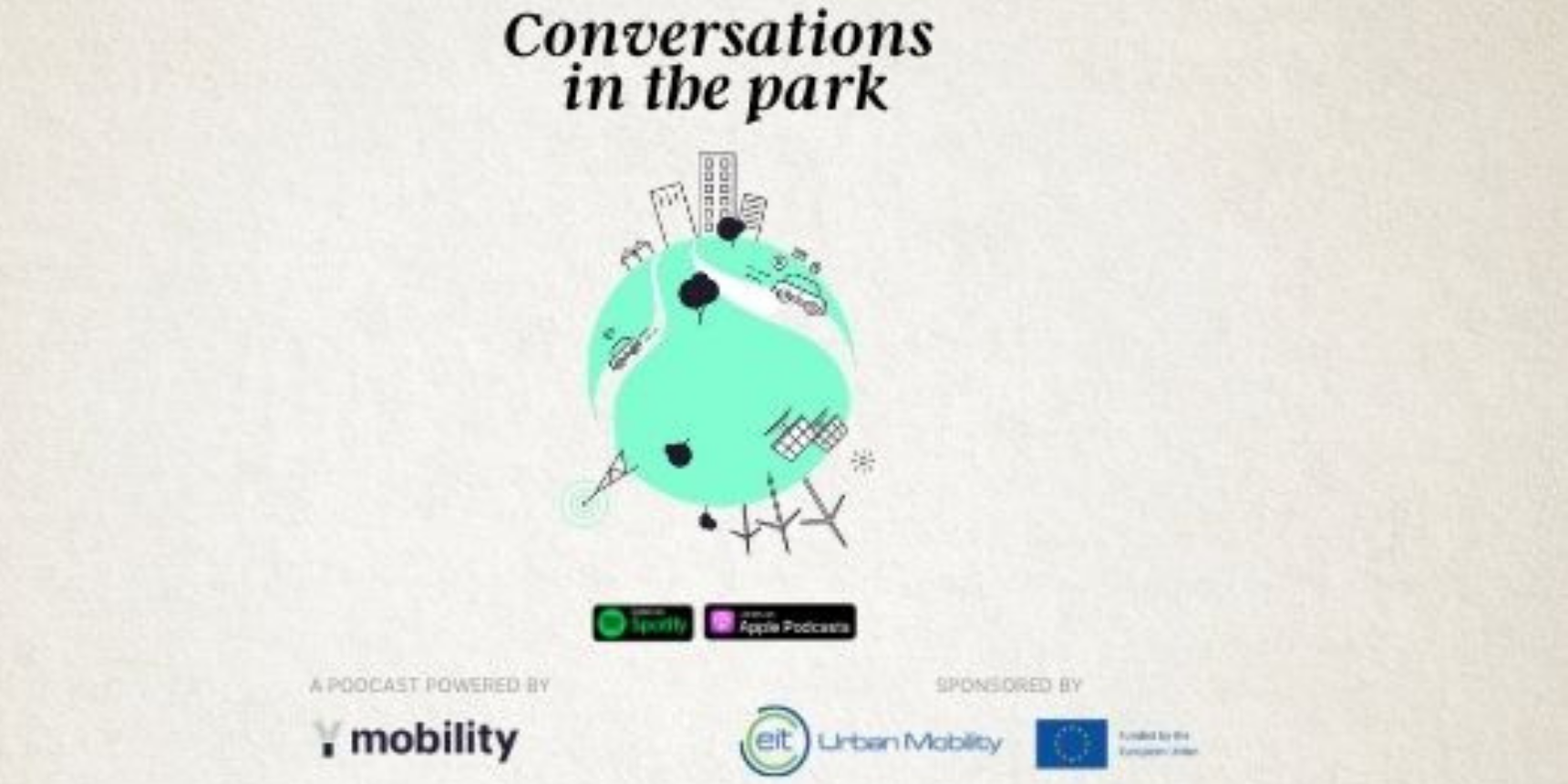EIT Urban Mobility podcast on the ideal city of the future

Episode 6 of Conversations in the Park sparked an insightful discussion about the ideal city of the future. Guests offered their hopes and vision on what the ideal city can look like.
Anna Clark, President of Women EIT, describes it as somewhere greener, cleaner, quieter. Augustin Friedel, Corporate & Sustainability Strategy VW Brand at Volkswagen AG, sees it as a city where mobility is more diverse, a mixture between shared and personal transport modes and hopefully more active mobility. Mouchka Heller, Automotive and Autonomous Mobility Lead at World Economic Forum, stresses the importance of a human-centric approach.
So, what is the ideal city of the future and how do we build it?
A report by the European Commission outlines these steps in making our cities smarter and greener.
- Reliable, affordable, and safe public transport is a key to sustainable mobility. Rather than focusing on low fares, agencies should develop an incentivising, time-varying pricing scheme. Like the one in Singapore.
- Introduction of Mobile navigation apps, so users can have data on the best way to get from A to B, such as Barcelona’s LIVE platform.
- Initiating dialogue with major employers to introduce more flexible working hours, so traffic does not coincide with home-to-work and work-to-home trips
Many are citing Paris as an example city of the future, with its 15 Minute neighbourhood initiative. Essentially the idea is to provide everything a person would need within a 15-minute walking distance; hence reducing the need for cars and vehicles and relying more on walking and cycling. Such an initiative would improve citizens’ health, both because of more movement and the reduction of harmful pollution from fossil fuels. And, of course, there are the general environmental benefits of fewer carbon emissions. On a different scale, reducing the need for cars would improve equality, as it becomes cheaper to move around. The initiative has proven very effective among Parisians and in 2019 alone, Paris managed to reduce car traffic by 8%.
It’s not a secret that the pandemic dramatically changed the way we move and what we need from our cities. Most of us worked from home, reducing the morning and evening commute and hence traffic. Mouchka Heller describes how our cities are currently designed around the typical 9-5 worker, which excludes many. With everyone re-thinking when and how they work, that raises the need to re-think mobility infrastructure. The NYC challenge is one example of that.
Augustin Friedel talks about the importance of tailoring solutions to the specific city, rather than using a copy-paste approach. The abundance of new mobility modes which have grown rapidly over the past five years, from e-scooters to ride-sharing, means cities can adopt an à la carte approach, and incorporate what does – or doesn’t – work best for them. Mouchka Heller also highlights that our approach has shifted from owning a mobility solution to needing a service to get from A to B and then B to C and onwards, resulting in a multi-modal journey. In the above article, Imogen Pierce, Head of City Engagement and Integration at ARRIVAL, says “We’re starting to see a fundamental shift where public transport operators are not viewing other modes of transport as competitors, but more as critical elements of the overall transport system that they need to work closely with.”
There is certainly a lot to be discussed about the future of urban areas and what we want them to be. The pandemic only accelerated this process by giving us a different perspective and shifting our needs and priorities. It is now up to us and the ‘designers’ of our cities to turn that vision into a reality.
In the podcast episode speakers discuss baby steps that need to be taken, as well as some challenges to achieving this vision. They also discuss whether there is good or bad mobility, and will the car ever be made completely redundant?
Hear what they have to say:
Learn more about EIT Urban Mobility's partnership with Y- Mobility


 Share this page
Share this page


